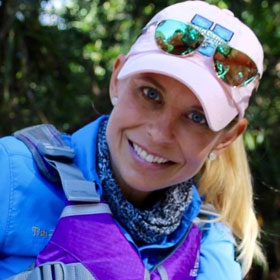4 Types of Habitat Restoration Projects You Can Support
By Debbie Hanson
Dec 16, 2024
Habitat restoration projects are becoming increasingly important for mitigating human impacts on natural areas and building resilience against climate change. These types of projects focus on restoring degraded habitats to support native wildlife species and maintain ecological balance.
Habitat restoration efforts can range from creating wildlife corridors to restoring forests, wetlands, and coastal areas. Learn about four types of restoration projects and how you can support them.
Wildlife Corridor Projects
One critical type of habitat restoration is wildlife corridor creation. Wildlife corridors are strips of native habitat — either natural or human-made — that connect two or more habitats that have been disrupted. Wildlife corridors serve as safe passages for animals to find food and water and reproduce. For example, the Wallis Annenberg Wildlife Crossing is a vegetated overpass that is under construction and will span the Ventura Freeway and Agoura Road under construction at Liberty Canyon in Agoura Hills in California to aid species like mountain lions and black bears.
While corridors can stretch thousands of miles, even a small area of healthy habitat in your own backyard can provide a safe stopover point for wildlife in a fragmented and developed landscape. Consider adding native plants and water features to help animals and migratory birds that pass through your local area.
Forest Restoration Techniques
When wildfires sweep through or a disease outbreak jeopardizes a healthy forest, there are processes in place to help restore our forests. These forest restoration projects include reforestation and natural regeneration. Reforestation efforts often involve planting native trees in deforested or degraded areas, while natural regeneration focuses on protecting areas to allow trees and plants to return on their own. Since forests serve as critical wildlife habitat, remove pollutants from the air, and aid in climate mitigation, you can get involved in tree planting efforts or donate funds to replant trees in impacted areas.
Wetland Restoration Efforts
Wetland restoration benefits include water filtration, flood control, and habitat for native wildlife. The Comprehensive Everglades Restoration Plan (CERP) in Florida is one of the largest habitat restoration projects in the world. This project involves the challenging goal of restoring water flow and enhancing the state’s ability to support wildlife and people. If you want to take positive actions to help with wetland restoration efforts, sign up to volunteer with state agencies, community groups, and environmental organizations to improve degraded wetlands. Find out about ways to get involved with the U.S. Fish and Wildlife Service.
Coastal Restoration Challenges
Coastal areas are facing increasing threats from climate change, including sea-level rise and stronger hurricanes. Coastal restoration efforts, like planting mangroves or constructing oyster reefs, can help stabilize our shorelines while reducing the amount of erosion. Mangroves act as natural barriers against the waves, protecting coastal communities while providing coastal wildlife habitat. In Louisiana, the Coastal Wetlands Planning, Protection, and Restoration Act aims to rebuild the state’s coastal marshes and improve the resilience of these critical ecosystems. You can help with mangrove planting efforts or oyster reef restoration by connecting with organizations such as the Coastal Conservation Association (CCA).
Habitat restoration projects, from wildlife corridors to coastal restoration initiatives, are imperative when it comes to rebuilding ecosystems that have been affected by human activity. By learning more about these projects and researching habitat restoration volunteer opportunities, you can be a part of making positive changes.









